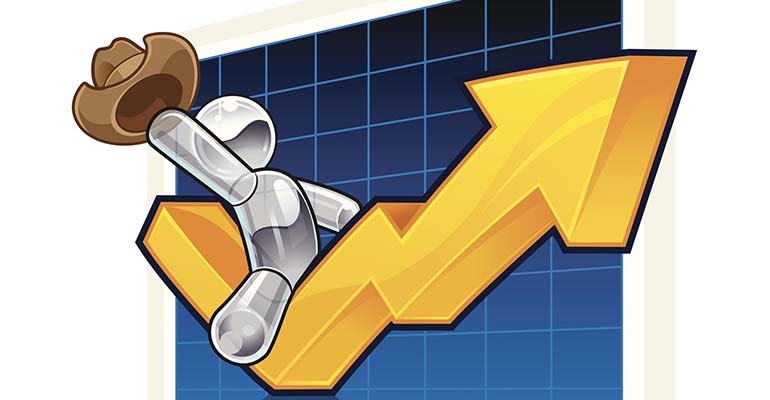July 24, 2020

I write about price relationships between cattle every week on this blog. This week I thought I’d share a circular argument I have in my mind about price relationships between cattle and land.
In early 2015 a banker friend of mine shared that he just approved a loan for a guy to buy pasture for $3,500 an acre. It was a lot for this area. He wasn’t sure what to think of it. I pointed out to him that bred heifers were selling for the same price per head, and asked him if he could ever remember in his career when commercial bred heifers were worth as much as the acre they walked on. He admitted he really had to think back a ways for that one.
As I write this I admit I have the advantage of hindsight. What I can tell you is that at the time I believed that both land and bred females were overvalued, which is why I refused to get into either at that time. Here’s where the circular argument comes in, which was the better investment, the land or the cattle?
Since that time land has decreased in value roughly 23% in our area and bred heifers decreased roughly 50%.
How to pay
If you are the type that thinks you needed to hold onto those bred heifers and calve them for 10 years in order to pay for themselves you are probably really pessimistic about the cattle biz right now. Here’s the rub: Those females were overvalued most of their lives. If they had been sold after having a couple calves and replaced with something else -- and there were many opportunities to do this during the next three years -- you could have made enough money from some of these trades to get the original $3,500 back. That’s including the value of the animal currently in inventory.
This is one reason I really like owning cattle. They are extremely liquid. With just one trip to the sale barn we can be in or out of the cattle business. And the price relationships between weights and types are always present, giving us the opportunity to generate positive cash flow.
Here’s where the hindsight really kicks in. What if you had bred heifers in inventory and sold them for $3,500 and bought that pasture for $3,500. The pasture is pretty much paid for, but now we have no cattle left in inventory. We just simply rent it to someone else for a while and when the cow market drops buy some cows to run on that paid-for pasture.
We would’ve all looked really smart doing something like that. But we cannot foresee those kinds of things. So how would we deflect the drop in value of the land? Just a couple weeks ago I wrote about the value of grass. Since most pasture is grazed in a conventional way, I feel it’s safe to assume that with better grazing management the carrying capacity could be nearly doubled in a short period of time. (Remember I live in a higher rainfall area.) As grazing guru Jim Gerrish points out, if you can double carrying capacity it’s like having a second ranch, but with a land payment and property taxes on only one. To me this principle is just like buying cattle we can upgrade to add some value.
Hunting leases are a big thing here, so there is that option along with offering camping to generate some cash flow. A couple years ago people were desperate to find a place to watch the eclipse. Is there timber on this land? Even if it’s just cedar trees, there are some contractors in my area who always seem to need cedar trees for home remodels. These are just a few ideas, and other people have more ideas on how to generate some cash flow from the land.
I do not have a solid conclusion on which is the better investment. I hope this piece did justice to the circular argument that rages in my mind. I have never thought of the value of land compared to the value of cattle until they were the same that year. And I have found it very interesting to watch as that relationship has changed over the years and the opportunities each has provided since then. To me good marketing or even investing should mean we are always improving our situation. I do think buying either land or cattle could offer that, if managed well.
Markets this week
This week the markets were a bit higher. Fats got a little boost but it was not enough. They are still undervalued. The feeder markets maintained their position of being a weight gain business, offering some value of gain (VOG) that allowed for profitable feeder-to-feeder trades.
This week we saw more lightweight calves come to town. Three- to five-weights were interesting to watch. We could see the worst and the best VOG right there. Some auctions had a $35 slide on those fly-weights, setting up a VOG under $30 per hundred. The next auction was inverted, meaning the heavier cattle brought more dollars per pound than lighter cattle, setting up a VOG over $2 per pound. On feeders weighing over 500 pounds, the market was more stable. The rollback between steers and heifers tightened up a bit this week, giving heifers a consistently higher VOG throughout the weight spectrum.
Geographical spreads remained in place once again this week, giving us the opportunity to make a better buy-back a ways down the road. Unweaned cattle were $4-13 back and feeder bulls were $12-20 back.
The opinions of the author are not necessarily those of Beef Producer or Farm Progress.
About the Author(s)
You May Also Like






